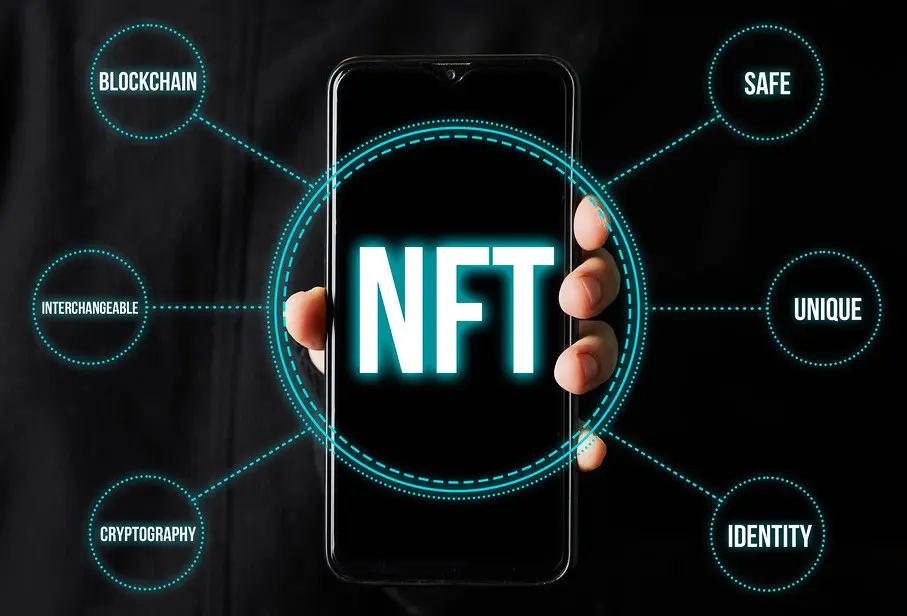5 examples of brands using NFT

Through technological changes or cultural phenomena, the modern world is constantly teaching us to broaden our horizons, to see things differently and to work in new ways.
Companies are not sitting on the sidelines, they are exploring new ways of working to stay relevant and stand out in the market.
If you follow trends, you’ve probably heard of NFTs!
These virtual objects with their unforgeable digital certificates that attest to their authenticity, created using blockchain technology.
In this article, we will look at examples of brands using NFTs for marketing purposes and present you with inspiring information that can help you create original campaigns that appeal to the public.
Why do brands use NFTs?

NFT art is a new universal language that allows brands to engage with customers and form lasting bonds. These “virtual tokens” are versatile and can be used to represent a variety of digital files, from images and videos to animated GIFs and audio files.
Some brands are also using technology to create other art forms, such as video game collectibles, virtual fashion items and virtual worlds.
5 examples of the use of NFT art by brands
Although NFTs are rather niche, their popularity is growing day by day, and more and more people want to own them and have new experiences.
Moreover, NFT art, like any other art, can serve many purposes for a brand, both from a commercial and non-commercial point of view. As a result, many interesting projects based on NFT have appeared in the last few years. Here are a few of them.
1. NFT art for charity
Depositphotos, an international content marketplace with many Ukrainians on its team, uses NFTs to draw attention to Russian war crimes committed during the war and raise funds for the reconstruction of cultural sites.
For Project Revival, the company collaborated with 7 local independent artists to create themed NFT artworks to be offered for sale, with the money raised being transferred to the Ukrainian Ministry of Culture and Information Policy.
The project features unique works in which artists reflect on the future of what has been destroyed (over 450 objects and buildings to date) and create illustrations that imagine what the country’s architectural heritage might look like in the future. The works are available for multiple purchases in the META HISTORY Museum
Charitable NFT art with creative rebuilding concepts allows the company to gain visibility, while raising awareness for an important cause and contributing to the future of the country.
2. NFT art to build community
TIME, one of the world’s most respected and recognized media outlets, has introduced TIMEPieces – an NFT initiative to foster its community by bringing together artists, collectors and fans. TIMEPieces features unique works from more than 40 artists from around the world who have contributed to the creation of a magazine.
The collection contains over 4500 original NFTs, both still and animated, ranging from paintings and illustrations to photographs and videos. Collectors could purchase them through a random blind drop for 0.1 ETH each. NFT holders will also receive unlimited access to TIME.com, exclusive invitations to in-person events and access to a variety of exclusive digital experiences.
TIME’s community strategy allows it to bring together and showcase a diverse group of artists, as well as interact with NFT communities to increase brand loyalty.
3. NFT art to provide unique experiences
To engage customers and provide them with a unique experience, the Robert Mondavi winery and the renowned French porcelain house Bernardaud have created a unique NFT wine collection.
Together they produced 1996 collectible porcelain bottles, each attached to an NFT and a unique piece of generative art created under the direction of artist Clay Heaton.
In addition to the physical item and an NFT, the purchase includes access to exclusive wine experiences, such as a wine tasting at To Kalon Winery, located in Oakville, California at Robert Mondavi Winery.
Robert Mondavi Winery and Bernardaud’s limited edition and luxury NFTs and collectible wine bottles have the potential to change the world of wine collecting and put the company ahead of the competition.
4. NFT as a tool for customer engagement
Balmain, a famous French luxury fashion house, has collaborated with fashion icon Barbie to create an exclusive collection that spans the physical and digital worlds. The duo released a ready-to-wear collection, an accessories line and a series of themed NFTs.
The entire collection features Barbie’s signature pink color, a Barbie-inspired Balmain logo and Balmain’s monogram motif. The digital collaboration includes three unique NFTs, which customers were able to purchase at auction via mintNFT, a marketplace for NFTs and digital collectibles.
The highest bid reached nearly $22,000, and in addition to the themed NFTs, the winners received a physical set of Barbie-sized Balmain pieces.
The Balmain-Barbie partnership marked a historic moment for fashion, technology and toys. It both engaged the brand’s customers and redefined the concept of brand ownership for them.
5. NFT art as a virtual commodity
Fashion companies are not only offering themed NFTs, they are also using them to develop digital property in games.
For example Burberry, a British fashion company in partnership with Mythical Games, a gaming technology company, created a brand character and virtual space. They also launched NFT clothing and accessories collections in the NFT Blankos Block Party game.
The exclusive branded characters, items and spaces are designed to promote product sales, build brand loyalty and engage the community. By offering limited edition virtual products, Burberry is demonstrating how brands can interact in a Web3 world, providing unique virtual experiences while creating new revenue streams.
In conclusion
In an age where new phenomena appear at lightning speed, companies are learning to adapt quickly to keep up with trends and create a buzz around their products. NFTs are a whole new way to attract and retain customer attention. They offer new marketing opportunities for brands and also pave the way for the metaverse.